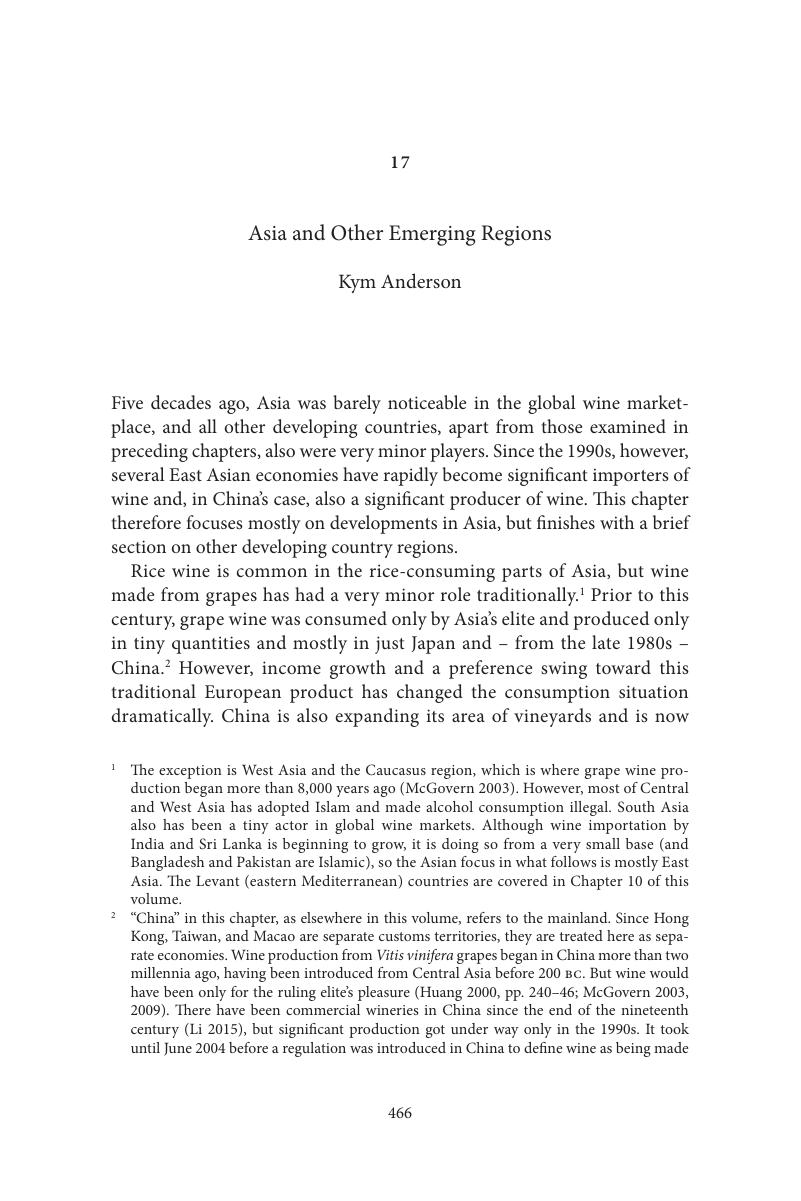Book contents
- Wine Globalization
- Wine Globalization
- Copyright page
- Contents
- Figures
- Tables
- Contributors
- Preface
- Abbreviations and Acronyms
- Technical Terms and Units
- Part I Overview
- Part II Traditional Markets
- Part III Newer Markets
- 11 Argentina
- 12 Australia and New Zealand
- 13 Chile
- 14 South Africa
- 15 United States
- 16 Algeria, Morocco, and Tunisia
- 17 Asia and Other Emerging Regions
- Part IV What’s Ahead
- Appendix The Global Wine Markets Database, 1835 to 2016
- Index
- References
17 - Asia and Other Emerging Regions
from Part III - Newer Markets
Published online by Cambridge University Press: 02 February 2018
- Wine Globalization
- Wine Globalization
- Copyright page
- Contents
- Figures
- Tables
- Contributors
- Preface
- Abbreviations and Acronyms
- Technical Terms and Units
- Part I Overview
- Part II Traditional Markets
- Part III Newer Markets
- 11 Argentina
- 12 Australia and New Zealand
- 13 Chile
- 14 South Africa
- 15 United States
- 16 Algeria, Morocco, and Tunisia
- 17 Asia and Other Emerging Regions
- Part IV What’s Ahead
- Appendix The Global Wine Markets Database, 1835 to 2016
- Index
- References
Summary

- Type
- Chapter
- Information
- Wine GlobalizationA New Comparative History, pp. 466 - 490Publisher: Cambridge University PressPrint publication year: 2018



